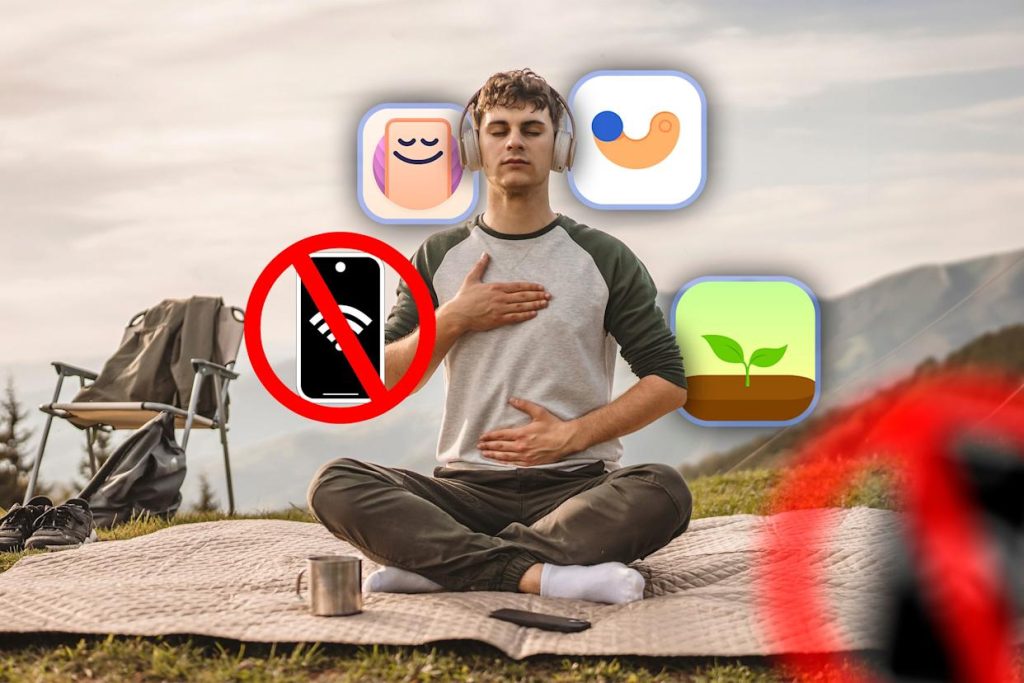In today’s hyperconnected world, our lives revolve around screens—smartphones, laptops, tablets, and televisions. While digital technology has brought immense convenience and connectivity, it has also ushered in a pervasive culture of constant stimulation and information overload. This relentless digital engagement can take a significant toll on our mental clarity, emotional well-being, and even physical health. The concept of a digital detox—intentionally reducing screen time and unplugging from technology—has gained traction as a powerful tool to reset our bodies and minds. Could a digital detox be the ultimate health reset? This article explores the many benefits of reducing screen time and offers practical tips to help you reclaim your mental and physical vitality in an increasingly digital age.
Understanding the Impact of Excessive Screen Time
To appreciate the value of a digital detox, it’s important to understand how excessive screen use affects us. Research shows that spending too much time on digital devices can contribute to a range of problems including eye strain, poor posture, disrupted sleep, increased anxiety, and diminished focus. The blue light emitted from screens interferes with melatonin production, the hormone that regulates sleep cycles, often leading to insomnia or poor-quality sleep. Moreover, constant notifications and social media scrolling can overload our brains, triggering stress responses and reducing our ability to concentrate. This digital overstimulation can fuel feelings of burnout, anxiety, and even depression.
Mental Clarity: Finding Focus Beyond the Screen
One of the most profound benefits of a digital detox is the restoration of mental clarity. When we constantly multitask between emails, messages, and social media feeds, our brain’s ability to focus diminishes. This phenomenon, often called “digital distraction,” hampers productivity and increases cognitive fatigue. Taking a break from screens allows the mind to reset, promoting better concentration, creativity, and problem-solving abilities. During a detox, many people report a renewed sense of calm and improved emotional regulation, as the relentless noise of digital input quiets down. This mental clarity can enhance overall decision-making and emotional resilience.
Physical Health Benefits of Unplugging
Digital detoxes aren’t just good for the brain—they have notable physical health advantages as well. Excessive screen time is often linked to sedentary behavior, which increases the risk of obesity, cardiovascular disease, and musculoskeletal problems. Prolonged sitting, especially with poor posture, can lead to chronic neck and back pain, known as “tech neck.” Taking deliberate breaks from devices encourages more movement and better body awareness. Many who undergo digital detoxes find themselves naturally incorporating more physical activity like walking, stretching, or yoga into their routines. Reduced screen exposure can also decrease eye strain and headaches, promoting better overall physical comfort.
Sleep Quality: Reclaiming Restorative Nights
Perhaps one of the most immediate benefits of reducing screen time is improved sleep quality. The blue light emitted by screens suppresses melatonin, delaying the onset of sleep and disrupting circadian rhythms. Using devices close to bedtime can also increase alertness, making it harder to unwind. A digital detox that includes a “screen curfew” in the evening helps reestablish natural sleep patterns. Better sleep boosts mood, cognitive function, immune health, and physical recovery. Establishing a relaxing bedtime routine without screens—such as reading a book, meditating, or gentle stretching—can further enhance restorative rest.
Emotional Well-being: Reducing Anxiety and Enhancing Presence
The nonstop flow of news, social media updates, and emails can fuel anxiety and stress. Social media, in particular, often triggers comparison, fear of missing out (FOMO), and feelings of inadequacy. Stepping back from digital platforms during a detox can help break these harmful cycles. Without the constant barrage of external stimuli, many people find they experience less emotional volatility and a greater sense of peace. This unplugged state encourages mindfulness—the practice of being fully present in the moment—which nurtures emotional well-being and self-awareness. Over time, this can strengthen relationships and improve overall life satisfaction.

Practical Tips for a Successful Digital Detox
Embarking on a digital detox doesn’t mean abandoning technology forever. It’s about creating intentional boundaries and habits that promote balance. Here are some actionable tips:
Set Clear Goals and Timeframes: Decide on the length of your detox, whether it’s a few hours daily, a full weekend, or a week-long break. Clear goals help maintain commitment.
Create Screen-Free Zones: Designate areas such as the bedroom or dining table as device-free spaces to reduce mindless usage.
Schedule “Tech-Free” Times: Allocate periods during your day to unplug, such as during meals or an hour before bedtime.
Use Technology to Limit Technology: Apps that track and limit screen time can help enforce your detox goals.
Replace Screen Time with Enriching Activities: Rediscover hobbies like reading, cooking, walking outdoors, or meditation.
Communicate Your Detox: Inform friends and colleagues about your intentions so they respect your unavailability.
Practice Mindfulness: Use moments away from screens to focus on your breath, surroundings, or gratitude.
Stay Patient and Flexible: Adjust your detox plan as needed without self-judgment; even small breaks offer benefits.
Incorporating Digital Detox Into a Balanced Lifestyle
A digital detox is most effective when integrated into a holistic lifestyle approach. Combine it with regular exercise, balanced nutrition, adequate hydration, and sufficient sleep to optimize health benefits. Mind-body practices like yoga and meditation can deepen the calming effects of unplugging. Cultivating strong in-person social connections supports emotional wellness that screens cannot replace. Over time, many people find that regular digital detoxes become essential rituals that enhance creativity, productivity, and joy.
Potential Challenges and How to Overcome Them
It’s natural to face challenges when cutting back on screen time. Feelings of boredom, fear of missing out, or work demands can tempt us back into old habits. Social pressure or habitual checking can also be obstacles. To overcome these, prepare alternative activities in advance, set realistic limits, and remind yourself of your reasons for detoxing. Practicing self-compassion is key—acknowledge slip-ups without harsh judgment and recommit gently. Support from friends or detox groups can provide motivation and accountability.
The Future of Digital Well-being
As technology continues evolving, the need to manage our digital consumption becomes ever more critical. Digital detoxes represent a proactive strategy to maintain mental and physical health in the digital era. Increasing awareness of “digital well-being” has sparked innovations like screen time management tools and apps promoting mindfulness. Employers and schools are also recognizing the benefits of balanced tech use. Ultimately, cultivating a healthy relationship with technology is an ongoing process that empowers us to harness its benefits without sacrificing our health.
Conclusion: Embrace the Power of Unplugging
A digital detox offers a powerful reset for mind and body amidst the chaos of modern life. By intentionally reducing screen time, you can restore mental clarity, improve physical health, enhance sleep, and nurture emotional balance. The journey begins with simple steps—setting boundaries, creating tech-free moments, and embracing enriching offline activities. Remember, this isn’t about rejecting technology but reclaiming control and prioritizing well-being. When you unplug, you open the door to a more mindful, vibrant, and healthy life. Could this be the ultimate health reset you’ve been seeking? The answer is just a screen break away.

















































